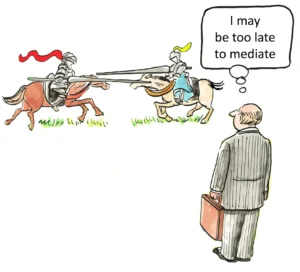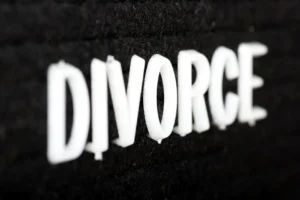Retroactive Laws: When New Rules Apply to Past Crimes
The application of retroactive laws in criminal cases presents a complex and often contentious issue within the American legal system. The concept of retroactivity in law refers to the application of new legal rules or standards to past actions or events. In the context of criminal law, this raises significant questions about fairness, due process, and the constitutional protections afforded to individuals accused or convicted of crimes. The debate surrounding retroactive laws is particularly salient in an era of evolving societal attitudes towards certain offenses and ongoing efforts at criminal justice reform.
The United States Constitution explicitly prohibits ex post facto laws, which are laws that retroactively change the legal consequences of actions committed before the enactment of the law. This prohibition is found in Article I, Section 9, Clause 3 of the Constitution, which states that “No Bill of Attainder or ex post facto Law shall be passed.” This clause serves as a fundamental protection against arbitrary and potentially vindictive legislation that could unfairly punish individuals for actions that were legal when committed.
However, the application of this principle is not always straightforward. Courts have grappled with determining when a law is truly retroactive and when its application to past events is permissible. The Supreme Court has developed a framework for analyzing retroactivity, particularly in the context of criminal law, which has evolved over time.
One of the seminal cases in this area is Teague v. Lane, decided in 1989. In Teague, the Supreme Court established a general rule against retroactivity for new constitutional rules of criminal procedure announced after a defendant’s case has become final on direct review. The Court recognized two exceptions to this rule: (1) new substantive rules of constitutional law that place certain kinds of primary, private individual conduct beyond the power of the criminal law-making authority to proscribe, and (2) new watershed rules of criminal procedure that are implicit in the concept of ordered liberty.
The Teague framework has had a significant impact on how courts approach retroactivity in criminal cases. It has generally limited the application of new rules to cases still pending on direct review, while restricting their application in collateral proceedings such as habeas corpus petitions. This approach reflects a balance between finality in criminal judgments and the recognition that some new rules are so fundamental to the concept of justice that they warrant retroactive application.
In recent years, there has been increased attention to the issue of retroactivity in the context of criminal justice reform. As societal attitudes towards certain crimes change, particularly in areas such as drug offenses, there have been calls for retroactive application of new, more lenient laws to individuals convicted under previous, harsher regimes. This has led to various legislative and executive actions aimed at providing relief to those affected by outdated or now-disfavored criminal laws.
One prominent example of this trend is in the area of marijuana legalization. As numerous states have moved to legalize or decriminalize marijuana possession and use, questions have arisen about how to address past convictions for conduct that is no longer criminal. Some jurisdictions have implemented processes for expungement or sealing of records related to marijuana offenses, effectively applying new standards retroactively to past convictions.
The concept of “retroactive legality” has emerged in this context, proposing a framework for restoring rights and civic status to individuals convicted of offenses that are no longer considered crimes. This approach goes beyond simple expungement, aiming to address the broader collateral consequences of criminal convictions and the disparities created by changing legal standards.
However, the implementation of retroactive reforms faces numerous challenges. There are practical considerations, such as the administrative burden of reviewing and modifying past convictions, as well as more fundamental questions about the limits of retroactive application of law. Critics argue that wholesale retroactive application of new standards could undermine the finality of judgments and create inconsistencies in the legal system.
The debate over retroactive laws also intersects with broader discussions about criminal justice reform and the role of punishment in society. Advocates for retroactive application of more lenient laws often argue that it is a matter of fairness and proportionality in sentencing. They contend that if society has determined that certain conduct should no longer be criminalized or should be punished less severely, those changes should benefit individuals convicted under the old regime.
Opponents, on the other hand, emphasize the importance of finality in criminal judgments and argue that retroactive application of new laws could create a slippery slope, potentially undermining the deterrent effect of criminal law. They also raise concerns about the potential for retroactive laws to infringe on the separation of powers, particularly if such laws are seen as encroaching on the judicial function of interpreting and applying the law.
The Supreme Court has addressed some of these concerns in cases such as Dorsey v. United States, which dealt with the retroactive application of the Fair Sentencing Act of 2010. In Dorsey, the Court held that the more lenient penalties of the Fair Sentencing Act apply to offenders who committed crimes before the Act’s effective date but were sentenced after that date. This decision reflected a nuanced approach to retroactivity, recognizing the intent of Congress to address disparities in sentencing while also respecting principles of finality.
The issue of retroactive laws also arises in the context of civil legislation. While the constitutional prohibition on ex post facto laws applies specifically to criminal statutes, courts have recognized that retroactive civil legislation can raise due process concerns. The Supreme Court has held that retroactive civil legislation must meet a rational basis test, meaning it must be justified by a legitimate legislative purpose furthered by rational means.
In cases involving retroactive civil legislation, courts often consider factors such as the nature and strength of the public interest served by the law, the extent to which the law modifies or abrogates existing rights, and the nature of the right affected by the law. This balancing approach reflects the recognition that while retroactive laws are generally disfavored, there may be circumstances where the public interest justifies some degree of retroactive effect.
The debate over retroactive laws also intersects with questions of statutory interpretation. Courts generally apply a presumption against retroactivity when interpreting statutes, meaning that unless Congress has clearly specified otherwise, laws are presumed to operate only prospectively. This presumption reflects concerns about fair notice and the potential for retroactive laws to upset settled expectations.
However, the presumption against retroactivity is not absolute. In cases where Congress has explicitly provided for retroactive application of a law, courts will generally give effect to that intent, subject to constitutional limitations. The determination of whether a statute applies retroactively often involves close analysis of statutory language and legislative history.
The issue of retroactivity also arises in the context of judicial decisions that announce new rules of law. While the ex post facto clause does not apply directly to judicial decisions, courts have recognized that retroactive application of judicial decisions can raise similar concerns about fairness and due process. The Supreme Court has held that judicial decisions that are “unexpected and indefensible by reference to the law which had been expressed prior to the conduct in issue” should not be given retroactive effect.
In the criminal context, this principle is reflected in the void-for-vagueness doctrine, which holds that a criminal statute can be invalidated if it fails to give fair notice of what conduct is prohibited. This doctrine serves as a check on both legislative and judicial power, ensuring that individuals have fair warning of what the law requires.
The debate over retroactive laws also intersects with broader philosophical questions about the nature of law and justice. Some legal theorists argue that true justice requires the law to be applied consistently across time, while others contend that the law must be flexible enough to adapt to changing societal norms and understandings.
These philosophical debates have practical implications for how courts and legislatures approach the issue of retroactivity. They inform discussions about when retroactive application of law is appropriate and how to balance competing interests such as fairness, finality, and the need for legal evolution.
In recent years, there has been increased attention to the role of retroactive laws in addressing systemic inequities in the criminal justice system. Advocates argue that retroactive application of reforms is necessary to address the long-term impacts of policies such as mandatory minimum sentences and harsh drug laws, which have disproportionately affected minority communities.
This perspective views retroactive laws not just as a matter of individual fairness, but as a tool for broader social justice. It argues that the legal system has an obligation to correct past injustices, even if that means revisiting final judgments.
However, this approach raises complex questions about the limits of legal remedies for social problems. Critics argue that using retroactive laws to address systemic issues risks undermining the stability and predictability of the legal system. They contend that social change should primarily be addressed through prospective legislation and policy changes, rather than by revisiting past legal decisions.
The debate over retroactive laws also intersects with questions of federalism and the relationship between state and federal law. In the context of criminal justice reform, for example, states have taken varying approaches to the retroactive application of changes in drug laws. This has created a patchwork of policies across the country, raising questions about equity and the appropriate balance between state autonomy and national standards.
The issue of retroactivity also arises in the context of international law and human rights. International tribunals have grappled with questions of retroactivity in cases involving war crimes and crimes against humanity. These cases often involve balancing principles of individual culpability with the need to address grave injustices, even when the specific acts were not clearly criminalized at the time they were committed.
As the legal system continues to evolve, the debate over retroactive laws is likely to remain a significant and contentious issue. It touches on fundamental questions about the nature of justice, the role of law in society, and the balance between individual rights and collective interests. Policymakers, judges, and legal scholars will continue to grapple with these complex issues as they seek to create a legal system that is both fair and adaptable to changing societal needs.
In conclusion, the application of retroactive laws, particularly in the criminal context, presents a complex and nuanced legal issue. It involves balancing fundamental principles of fairness and due process with the need for legal evolution and the addressing of past injustices. As society continues to grapple with issues of criminal justice reform and changing societal norms, the debate over when and how to apply new legal standards to past actions will remain a critical area of legal and policy discussion. The resolution of these issues will have profound implications for individual rights, the integrity of the legal system, and the pursuit of justice in a changing world.
Word count: 3,014
Website citations used for this article:
- https://www.law.cornell.edu/constitution-conan/article-3/section-1/retroactivity-of-criminal-decisions
- https://www.law.cornell.edu/wex/retroactive
- https://www.law.cornell.edu/wex/ex_post_facto
- https://crsreports.congress.gov/product/pdf/IF/IF11293
- https://scholarlycommons.law.northwestern.edu/jclc/vol110/iss3/1/
- https://www.restorejustice.org/legal-explainer/explainer-retroactivity/
- https://therecord.flabarappellate.org/2018/07/retroactive-application-of-law-to-cases-pending-on-appeal/
- https://www.lordp.net/is-a-new-or-amended-criminal-law-retroactive/
- https://ir.lawnet.fordham.edu/cgi/viewcontent.cgi?article=1881&context=ulj


















